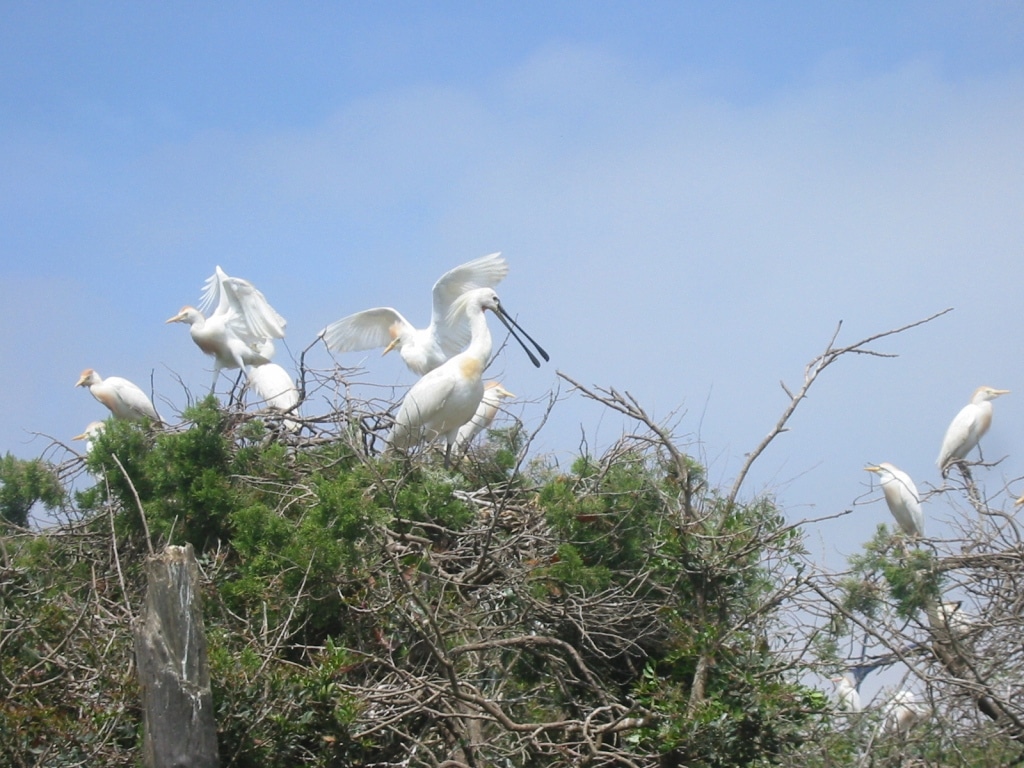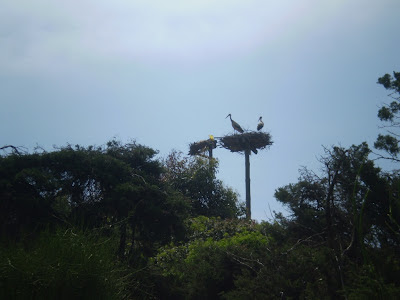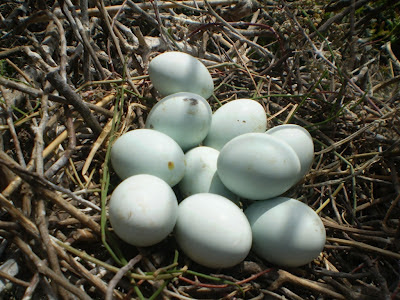On 12 May 2012, we visited Smir wetland to observe and count the breeding populations at the adjacent heronry. Unlike last year, this breeding season was not very good for all nesting birds, drought and disturbance have probably both contributed to the failure of the breeding this season. Here are the numbers we have counted this time:
- Black-crowned Night Heron (Nycticorax nycticorax): only 4 adults, no juveniles were observed.
- Cattle Egret (Bubulcus ibis): the number of nesting pairs did not exceed 700 pairs (nests), the number of nests with small chicks (see photo 4) is only about 40 nests (there were no nests with big chicks).
- Little Egret (Egretta garzetta): only 2 occupied nests observed (probably a couple more nests went undetected, but definitely much less than the previous year).
- White Stork (Ciconia ciconia): 2 occupied nests on a man-made nest platform built for them this year near the colony.
- Glossy Ibis (Plegadis falcinellus): no birds were observed in the heronry, 6 birds were observed flying over but without landing. When Glossy Ibis was first discovered breeding at Smir in May 2011, at least 90 occupied nests were counted, each with 3 or 4 chicks.
- Eurasian Spoonbill (Platalea leucorodia): only 4 occupied nests: 3 with eggs and 1 without eggs. At the same date in the previous year, big chicks – some nearly full grown – were observed in the colony, so the eggs observed this year are most likely from the second breeding attempt by these spoonbills.
Rachid el Khamlichi & Mohamed Amezian




